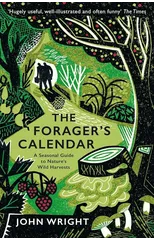A Natural History of the Hedgerow
And ditches, dykes and dry stone walls
(Author) John WrightIt is difficult to think of a more quintessential symbol of the British countryside than the British Hedgerow, bursting with blackberries, hazelnuts and sloes, and home to oak and ash, field mice and butterflies. But as much as we might dream about foraging for mushrooms or collecting wayside nettles for soup, most of us are unaware of quite how profoundly hedgerows have shaped the history of our landscape and our fellow species.One of Britain's best known naturalists, John Wright introduces us to the natural and cultural history of hedges (as well as ditches, dykes and dry stone walls) - from the arrival of the first settlers in the British Isles to the modern day, when we have finally begun to recognise the importance of these unique ecosystems. His intimate knowledge of the countryside and its inhabitants brings this guide to life, whether discussing the skills and craft of hedge maintenance or the rich variety of animals, plants, algae and fungi who call them home. Informative, practical, entertaining and richly illustrated in colour throughout, A Natural History of the Hedgerow is a book to stuff into your pocket for country walks in every season, or to savour in winter before a roaring fire.
John Wright
John Wright is best known for his classic novel "The Man Who Walked Between the Towers," which tells the true story of Philippe Petit's daring tightrope walk between the Twin Towers in 1974. Wright's vivid storytelling and use of suspense have made him a beloved figure in children's literature.






